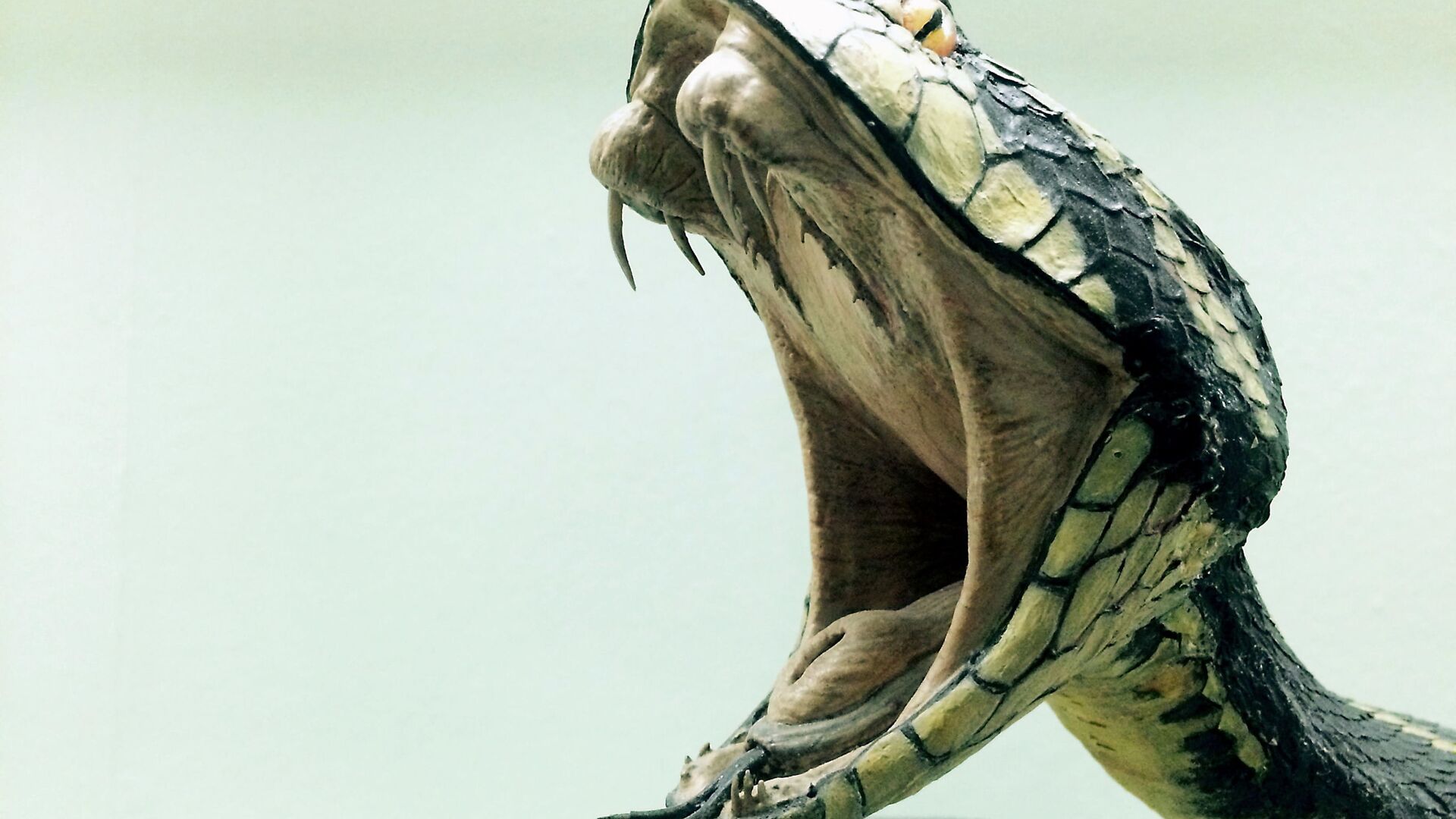https://sputnikglobe.com/20221012/huge-serpent-skeleton-spotted-on-the-french-coast-1101742729.html
‘Huge’ Serpent Skeleton Spotted on the French Coast
‘Huge’ Serpent Skeleton Spotted on the French Coast
Sputnik International
The large serpent was believed by many to belong to a prehistoric serpent called a Titanoboa, an extinct genus of snake that lived in what is now northeastern... 12.10.2022, Sputnik International
2022-10-12T03:07+0000
2022-10-12T03:07+0000
2022-10-12T03:07+0000
newsfeed
snake
society
https://cdn1.img.sputnikglobe.com/img/07e5/08/13/1083660881_0:257:2731:1793_1920x0_80_0_0_48834dc565b29c79df9c5c4da97a5aa4.jpg
The alleged skeleton of an extinct snake posed in a slithering movement was captured by Jack Hobbs on Oct. 11, and posted on TikTok. The extra-large skeleton can be seen during low tide, according to reports.Not a real snake, but a metallic sculpture called “Serpent d'ocean,” located on the Saint-Brevin-les-Pins coast and created by Chinese artist Huang Yong Ping. According to the French Website Loire Valley, “Its skeleton appears with each tide, resembling an archaeological excavation and its movement makes it look alive. Don’t miss it!”The sculpture was unveiled on the west coast of France in 2012 as part of the Estuaire art exhibition, which has showcased contemporary art since its inception in 2007. Often created in situ, each work in the permanent collection “guides” visitors to a noteworthy site along the 60 kilometers that make up the Loire estuary.The work was created with the rough iconography of China’s mythological dragons in mind, with an underlying environmental message: humankind’s mistreatment of oceans is not only killing its life, but also its wonder.Every site in the outdoor art gallery can be accessed freely, and from April to October, a cruise boat allows visitors to view the exhibits from the water.
Sputnik International
feedback@sputniknews.com
+74956456601
MIA „Rosiya Segodnya“
2022
News
en_EN
Sputnik International
feedback@sputniknews.com
+74956456601
MIA „Rosiya Segodnya“
Sputnik International
feedback@sputniknews.com
+74956456601
MIA „Rosiya Segodnya“
newsfeed, snake, society
‘Huge’ Serpent Skeleton Spotted on the French Coast
The large serpent was believed by many to belong to a prehistoric serpent called a Titanoboa, an extinct genus of snake that lived in what is now northeastern Colombia that could grow up to 47 feet long. It was later revealed to be a 425-foot art installation.
The alleged skeleton of an extinct snake posed in a slithering movement was captured by Jack Hobbs on Oct. 11, and posted on TikTok. The extra-large skeleton can be seen during low tide, according to reports.
“Hidden on Google Earth, users believe this to be a giant snake. It’s about 30 meters long and bigger than any snake caught before,” the voiceover said, showing the
satellite images.
Not a real snake, but a metallic sculpture called
“Serpent d'ocean,” located on the Saint-Brevin-les-Pins coast and created by Chinese artist Huang Yong Ping. According to the French Website Loire Valley, “Its skeleton appears with each tide, resembling an archaeological excavation and its movement makes it look alive. Don’t miss it!”
The sculpture was unveiled on the west coast of France in 2012 as part of the
Estuaire art exhibition, which has showcased contemporary art since its inception in 2007. Often created in situ, each work in the permanent collection “
guides” visitors to a noteworthy site along the 60 kilometers that make up the Loire estuary.
The work was created with the rough iconography of China’s mythological dragons in mind, with an underlying environmental message: humankind’s mistreatment of oceans is not only killing its life, but also its wonder.
Every site in the outdoor art gallery can be accessed freely, and from April to October, a cruise boat allows visitors to view the exhibits from the water.



